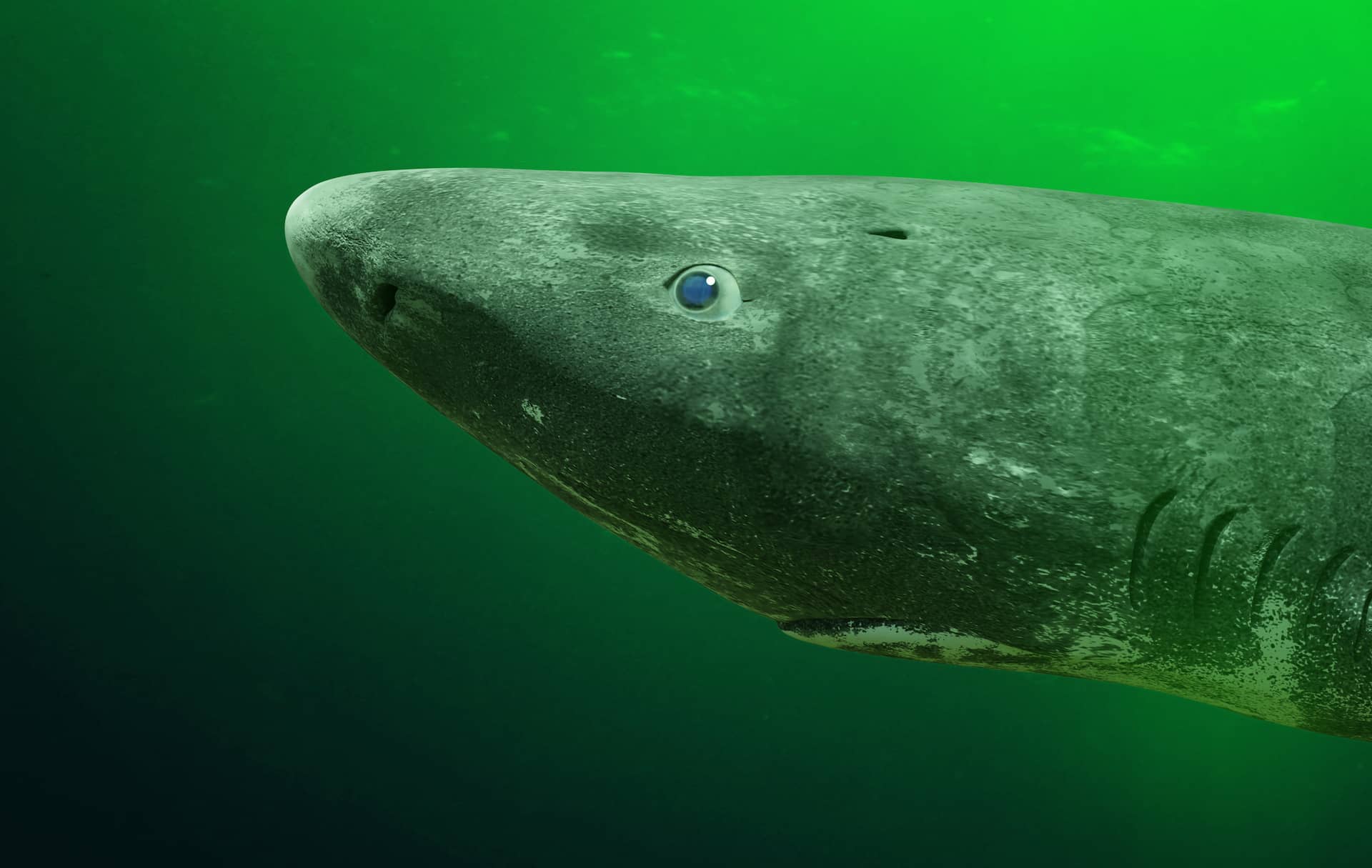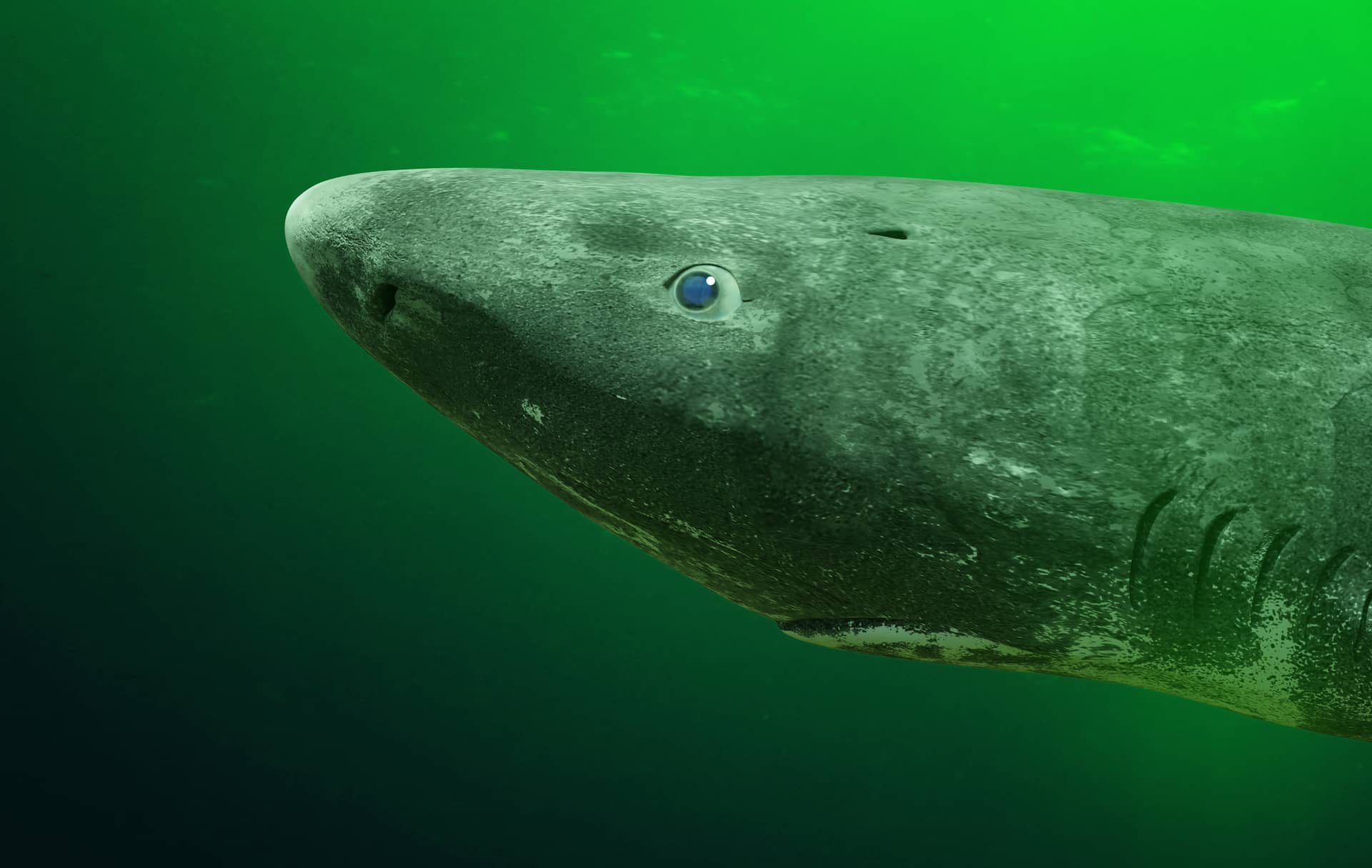
Wildlife Fact Sheet
Greenland Shark
Somniosus microcephalus
About
Greenland sharks are big, old and slow. They mature late and grow very slowly. They’re even known as “sleeper sharks” because they move so slowly, especially in comparison to other sharks. Greenland sharks feed on surprisingly speedy prey, including fish, seals, squid and seabirds.
Others should be careful about eating Greenland sharks, though. Their meat is toxic when fresh and has been shown to cause a drunk-like state in humans and dogs. Greenland sharks used to be fished heavily for their liver oil, and although that ended in the 1960s, they are still sometimes caught as bycatch.

Did You Know?
Greenland sharks have a wide-ranging diet. Scientists have even found bits of horses and reindeer in stomachs of large Greenland sharks!
Get Ocean Updates in Your Inbox
Sign up with your email and never miss an update.
Status and Conservation
Greenland sharks recently broke a record: Scientists discovered a 400-year-old female Greenland shark, who set a new record for the oldest living vertebrate! In fact, the only animal discovered who is older is an Icelandic clam named Ming, who lived to 507 years old. The oldest living human only lived to 122. Humans have some serious work to do to catch up.
In fact, Greenland sharks come from a family of record holders. They are part of the dogfish family, which holds shark titles including the smallest species (the dwarf lanternshark is smaller than a human hand!), longest pregnancies and most abundant worldwide.